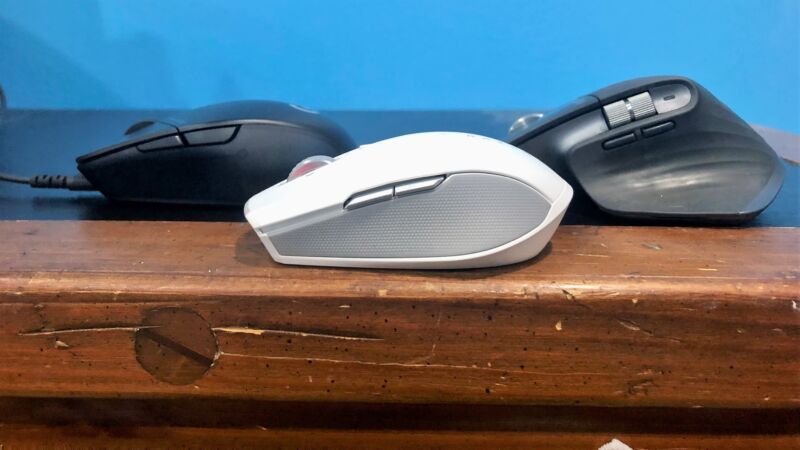
Enlarge (credit: Scharon Harding)
You may think of the mouse as one of the most basic PC peripherals. And some mice may be. Point, click, and you're done. But modern mice, especially those in the high-end, gaming, and wireless realms, have come a long way. And if you're looking for a more advanced mouse, you may be surprised by some of the parlance going around.
Below, we'll provide quick breakdowns of some of the most common terms you'll see when looking for an advanced mouse. Some of this may be a refresher for you, while other phrases may be irrelevant to your needs. Some terminology may deal with performance differences that only an astute enthusiast would notice. More importantly, some of the specs detailed below will hopefully provide you the kind of information needed to justify spending $50-plus (or even $150-plus) for a mouse.
Optical sensor
High-end mice these days aren't relying on trackballs anymore. Instead, they're largely using optical sensors, leveraging a camera, LED, complementary metal oxide semiconductor (CMOS) image sensor (like in a camera), and digital signal processor (DSP) to convert your arm movements into pointer movements. The DSP, as explained by How Stuff Works, "is able to detect patterns in the images and see how those patterns have moved since the previous image. Based on the change in patterns over a sequence of images, the DSP determines how far the mouse has moved and sends the corresponding coordinates to the computer." A bit less common in terms of new releases of late (but still advanced) are laser sensors, like Logitech's Darkfield sensor used in Logitech MX Master 3.
Read 33 remaining paragraphs | Comments

Enlarge (credit: Scharon Harding)
You may think of the mouse as one of the most basic PC peripherals. And some mice may be. Point, click, and you're done. But modern mice, especially those in the high-end, gaming, and wireless realms, have come a long way. And if you're looking for a more advanced mouse, you may be surprised by some of the parlance going around.
Below, we'll provide quick breakdowns of some of the most common terms you'll see when looking for an advanced mouse. Some of this may be a refresher for you, while other phrases may be irrelevant to your needs. Some terminology may deal with performance differences that only an astute enthusiast would notice. More importantly, some of the specs detailed below will hopefully provide you the kind of information needed to justify spending $50-plus (or even $150-plus) for a mouse.
Optical sensor
High-end mice these days aren't relying on trackballs anymore. Instead, they're largely using optical sensors, leveraging a camera, LED, complementary metal oxide semiconductor (CMOS) image sensor (like in a camera), and digital signal processor (DSP) to convert your arm movements into pointer movements. The DSP, as explained by How Stuff Works, "is able to detect patterns in the images and see how those patterns have moved since the previous image. Based on the change in patterns over a sequence of images, the DSP determines how far the mouse has moved and sends the corresponding coordinates to the computer." A bit less common in terms of new releases of late (but still advanced) are laser sensors, like Logitech's Darkfield sensor used in Logitech MX Master 3.
Read 33 remaining paragraphs | Comments
January 21, 2022 at 05:45PM

Post a Comment